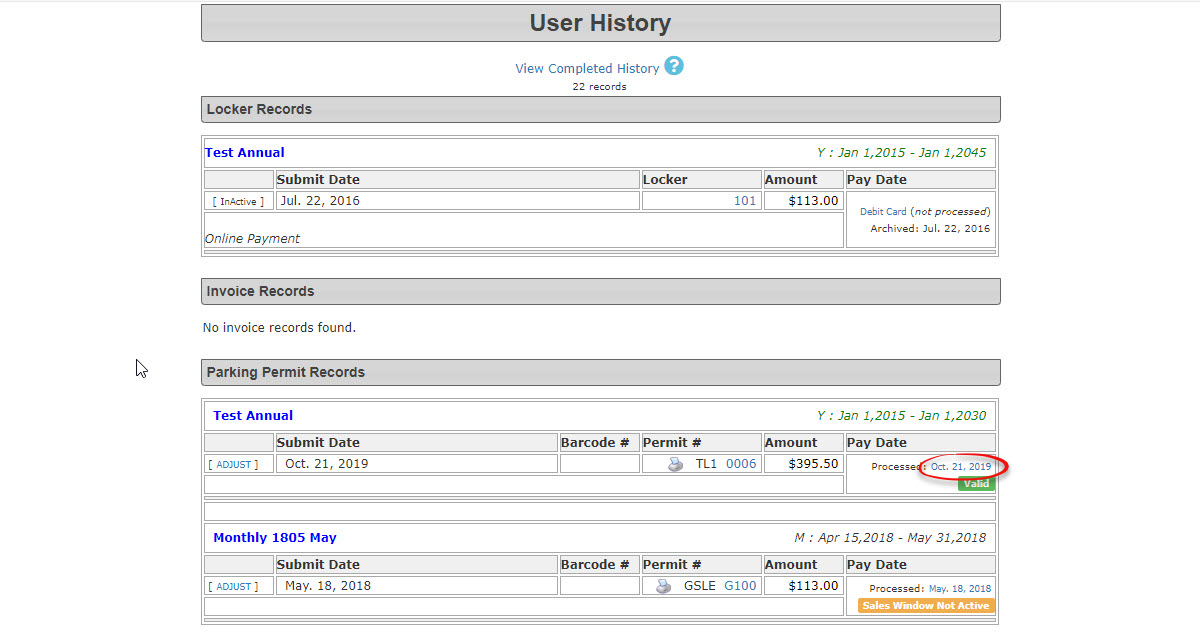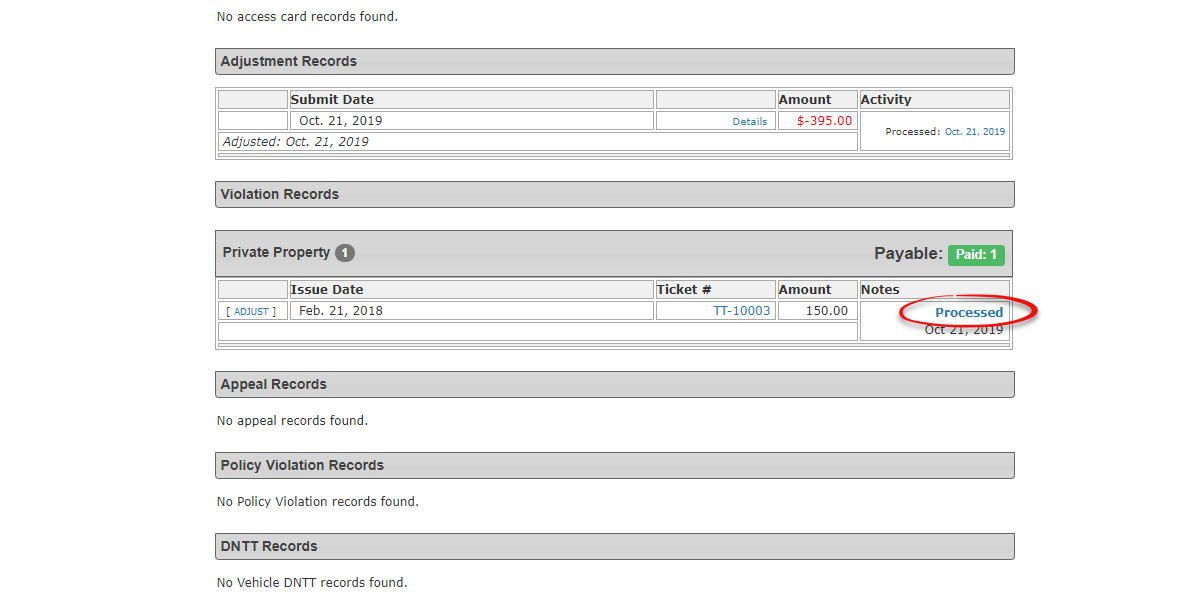What does a refund look like in the system?
WhenWhat does a Refund do wein use this?
OPS-COM?
OnceThink of a transactionrefund hasas beenhitting completed,the it"undo" canbutton be refunded. By doingfor a refund,completed thetransaction. When you process a refund:
- Money Back: The customer gets their payment reversed.
- Item Released: The item(s)
that wasthey purchasedbecomes disassociated from the user and isbecome available again in our inventory, ready to be sold toanothersomeoneuser.else.
Important thereNote: isWhen moreyou thanrefund onean item in theentire transaction, all items within that transaction will be reimbursedreimbursed, and all itemsof them will be released back tointo inventory.
If only one item needs to be reimbursed, do an adjustment and release the item separately.
1. Locate the user profile for the user you want to refund for.
Note: The top right-hand corner will always identify the name of the user that is being worked on. In our example we will refund Permit #1 at $395.50 but keep in mind the process is identical for and refund such as Standard Permits, Temporary Permits, Locker rentals, violations etc.
2. From the History Tab select All Records.
For Standard & Temporary Permits or Lockers
3. Find the permit you want to refund and click on the Processed date link.
For Violations
Click on the word Processed to access the transaction details.
4. The Transaction Details screen appears. Click on the Refund button to begin the refund process.
The Refund Payment Record window will pop up. Enter the internal organization Requisition Code (optional) and the Refund Amount (including taxes). You are required to enter a comment in order to proceed.
5. Click the Refund Payment Record button to continue. A confirmation pop-up will appear. Click OK to continue.
IMPORTANT: By using refund for permits and lockers you will be releasing all items associated with this Confirmation Number. Violations however will simply go back to awaiting payment status.
6. The Adjustment Information pop-up will display showing the refund details. You have the ability to select the type of refund in this window.
7. Click on Process This Adjustment to proceed. You will return to the Transaction Detail window showing the details of the refund. Notice the refund amount of $-395.50 is listed as an adjustment.
8. To see how this appears in the user's profile on the admin side, go back into the history tab and select All Records. In the user history we see the record of the original purchase as well as; (1) Released date and a note indicating the permit is "Released back to system by refund process" and (2) we can also see the refund under Adjustment Records.
Refunding to Deal with a NSF Payment
WhenSometimes, a payment is made and processed the item is considered paid for. If the payment fails to(like passa atcheque thebouncing bank– (NSF)known youas would"NSF" for Non-Sufficient Funds). When this happens, we need to perform"refund" athat refundpayment in orderthe system to removekeep theour paymentfinancial fromrecords the system.accurate.
Why do we refund a NSF Payment?
Refunding for a NSF payment isIt's essentially a bookkeeping issue.task. For example, ifImagine a cheque iscame returnedin NSF,and thewas adminrecorded mustas a payment. If that cheque then bounces, we need to remove thethat "incoming" payment from theour systemsystem. inBy performing a mannerrefund, we create an "outgoing" record that showsbalances out the incominginitial cheque"incoming" as a payment and the refund as the removalrecord of the paymentfailed payment. This way, our system accurately reflects that inthe realitymoney never happenedactually due to the NSF payment.arrived.
After you process the refund,refund for an NSF payment, reports (like the Processed Payment ReportReport) for this transaction shouldwill show the payment onboth the reportinitial as"payment" well asand the subsequent "refund." This is perfectly normal asand withcorrect! anyIt refund you will seerecords the incomingattempt paymentto pay, and then the refund (outgoing) payment. These both need to be there to record the attempt to pay (for lackremoval of a better term) which would show as income. Since the cheque bounced that income has to be removed from the OPS-COM system (system of record).
By doing the refund and processing it you essentially remove that payment fromdue to the systemNSF.
Key Tips for NSF Refunds:
- Payment Type: When you
do so in accordance with typical book keeping entries. Be sure toprocess the refundwithfor an NSF, be sure to select the same payment type (cheque)e.g., "Cheque") as the originalpaymentfailedattempt.payment. Thiswill make moremakes sensetofor anyonedoingreviewingyouyour accounting. - Clear
ItNotes:isIt'salso verysuper important to leavegoodclear and detailed notesto documentdocumenting the failed payment and the exact reason for the refund. This helps everyone understand the situation later on!





